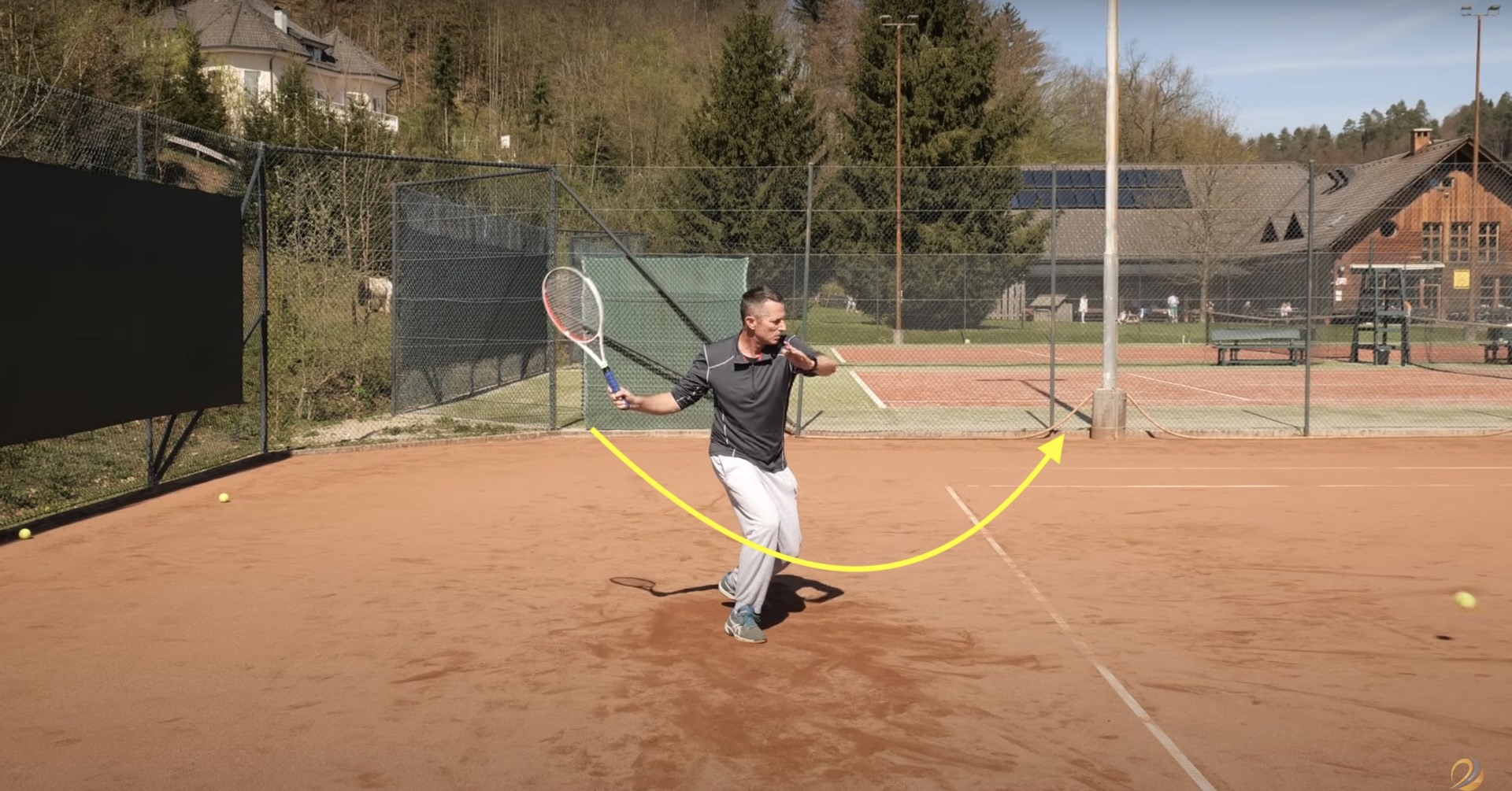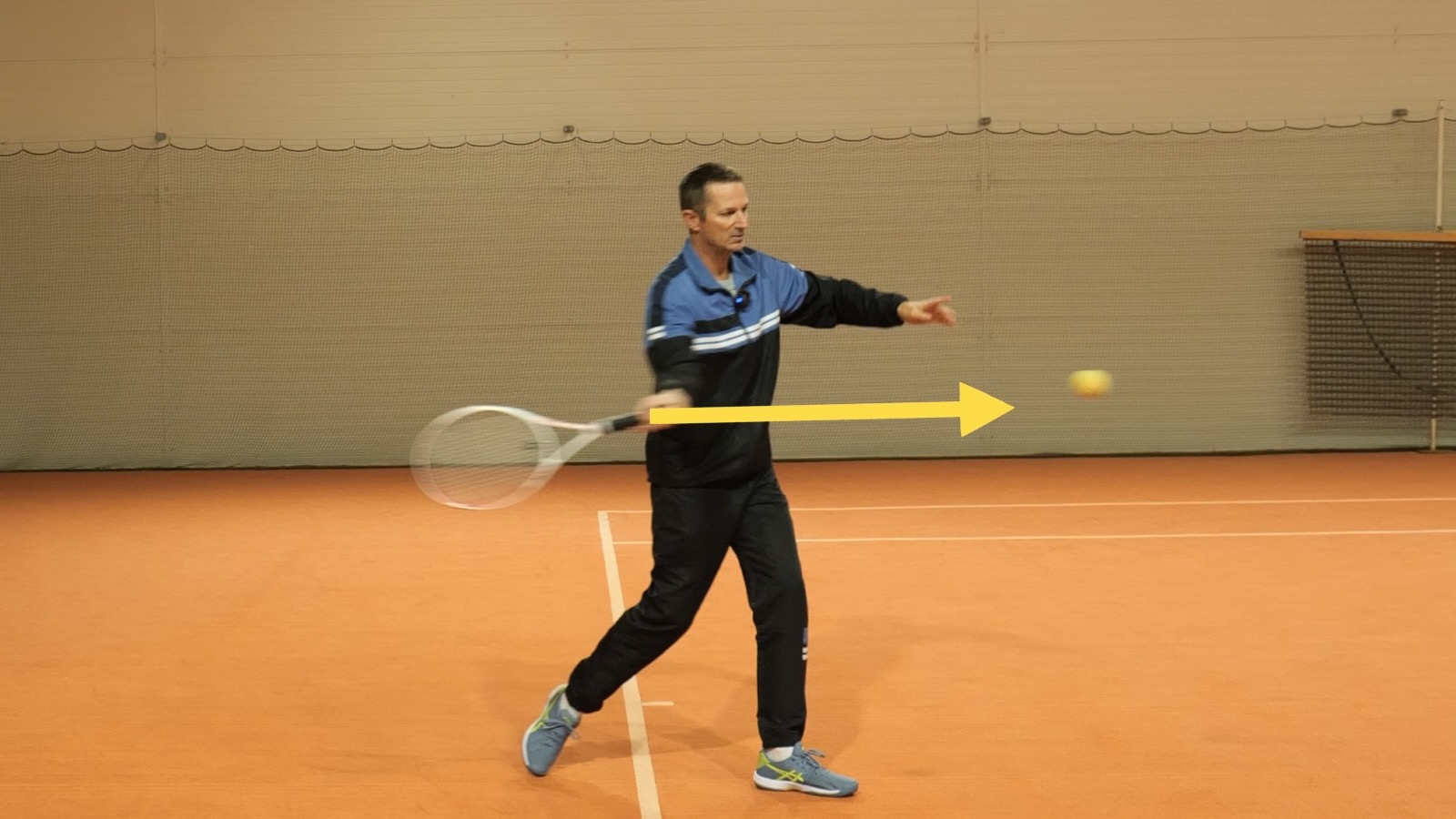In tennis we have three main tactical situations - we can be on offense, in a neutral situation and in defense.
When we are in a neutral situation it means we are not able to put opponent under pressure without taking huge risks.
Therefore our main objective is to keep our opponent also in the neutral situation so that they cannot attack us.
This article will show you a simple definition of a good neutralising ball from the baseline and a way to practice hitting such a ball with your partner or even a ball machine.
Why Power Is Not (Always) The Answer
Tennis players tend to think that hitting the ball with power is always a good thing but they forget that with more power comes more risk.
Another thing to consider is that at lower levels of tennis, somewhere between 2.0 and 4.0 NTRP rating, players do struggle with faster incoming balls even if they are positioned well.
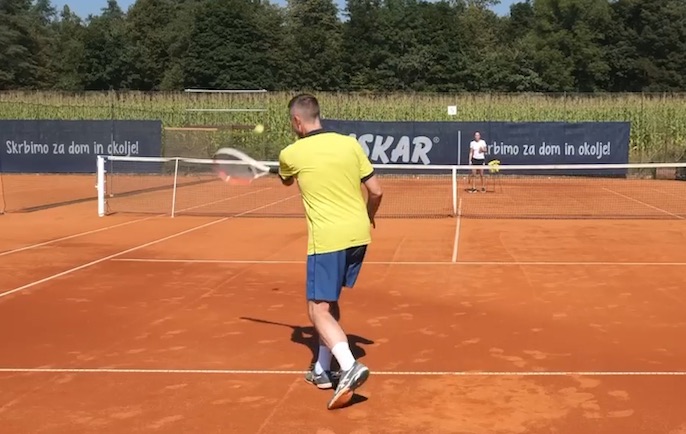
I am hitting with left hand to simulate an NTRP 2.0 player who struggles with fast incoming balls.
Their timing and ball judgment is not so good yet so they struggle to hit the ball cleanly and with good control.
That’s why you will (unfortunately) for quite a few years along your tennis journey get good results (forcing a short ball or an error) as soon as you hit a faster ball.
But once you start playing 4.0 and better players that won’t work any more as players will have no problem handling your speed and fact using it against you.
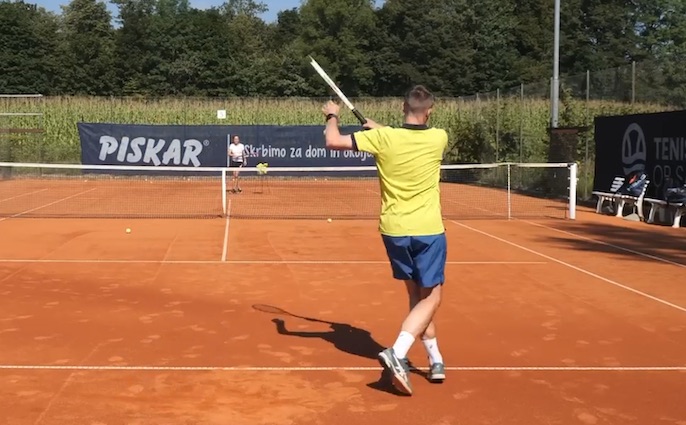
If I play with my right hand then fast incoming balls do not bother me at all - if I am positioned well. In fact I use the incoming speed to my advantage so I hit more effortlessly.
Therefore it will be pointless to try and pressure such players with faster balls from the baseline because they will be ineffective and risky.
Your main objective is then to hit a good neutralising ball to prevent them from attacking and at the same time put them under a little bit of trouble.
What Is A Good Neutral Ball
While at first glance you may say that a good neutral ball is a deep ball, we need to take it a bit further and define it better.
A good neutralising ball is a ball that is rising as it’s crossing the baseline!
That is a very simple definition of a neutralising ball and yet it is true to almost all levels of players even at around 5.0 NTRP level.
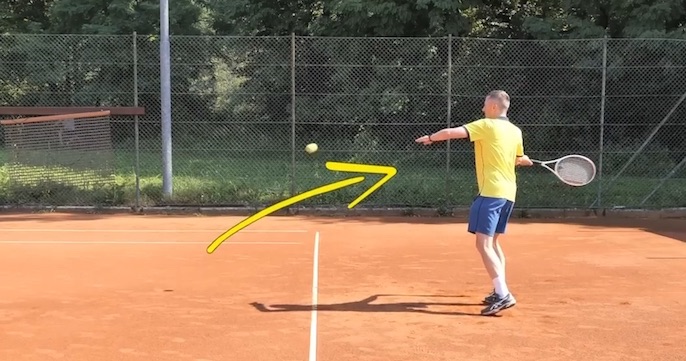
The simple definition of a good neutral ball - it's rising over the baseline.
There are three main reasons why the ball rising over the baseline is so effective in neutralising the opponent:
1. Good Depth & Risk Of Attacking
When a ball rises as it crosses the baseline, it typically lands deep within your opponent's court.
This depth makes it challenging for your opponent to attack since they are very far from you at that moment and their shot would take long time to reach you therefore you will be able to get to most of their shots comfortably.
2. Time Constraint & Difficult Timing
Deep landing balls create a time constraint for your opponent.
There is less time from the bounce to their contact point which makes it more difficult to time the stroke well and hit the ball in the sweet spot.

Timing is very challenging when there is little time from the bounce to contact.
This again increases the risk of missing in general and especially if they decide to hit the ball harder.
3. Hitting Outside The Ideal Strike Zone
An ideal strike zone is a zone where hitting a forehand or a backhand is the most comfortable and therefore gives us the most power and control with the least amount of effort.
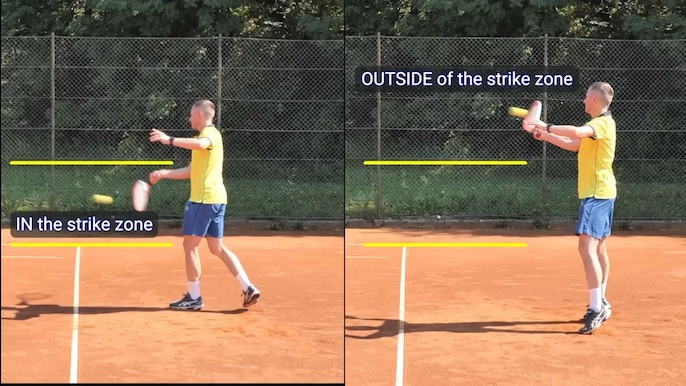
Difference between hitting in the strike zone and outside of it.
When we hit deep balls that rise over the baseline they will in most cases end up outside of the ideal strike zone and cause problems to the opponent in terms of ball control and power.
A combination of all three reasons described above is what makes the ball that is rising over the baseline so effective in neutralising.
How to Practice Hitting A Good Neutral Ball
Now that you grasp the significance of a good neutralizing ball, let's delve into a practical exercise to enhance your skills.
This simple yet effective drill can be practiced with a partner, helping you hone your ability to read the ball early and respond swiftly during a match.
Rally with your partner from the baseline and call out whether partner’s ball is rising over the baseline or not.
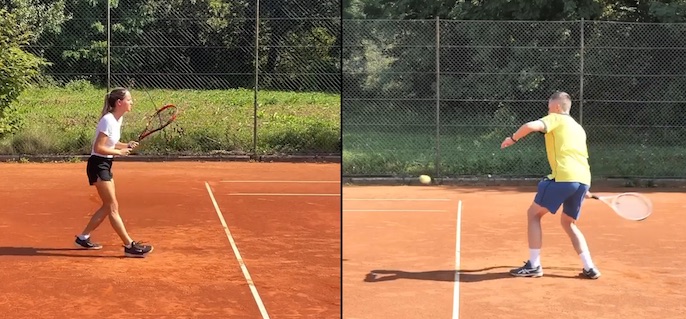
You can practice hitting. a good neutral ball in a very simple drill with a partner.
Simply call out loud YES or NO so that your partner can get immediate feedback of their shot and know whether they need to adjust it for their next shot.
You can rally like that for a couple of minutes and see who gets a higher score in a limited amount of time.
By the way, this is one way of evaluating the quality of baseline shots in high performance tennis all the way from junior level to pro level.
We time the players for 1 minute and count how many times they hit the ball from the baseline so well that it’s rising over the baseline.
The Road Ahead: Mastering the Heavy Ball
Now that you've laid the foundation by understanding and practicing the neutralizing ball, you're ready for the next step in your tennis journey - mastering the heavy ball.
The heavy ball represents a more advanced version of the good neutralizing ball, and I'll delve into it in the upcoming video article.
For now realise that a good neutralising ball even without much topspin that is rising over the baseline prevents most attacks even from 4.0 to 5.0 players.
Note that depth is a consequence of moderate speed and the right height so if you need a quick reminder how to focus on the height check out the previous article on how to aim in tennis.

